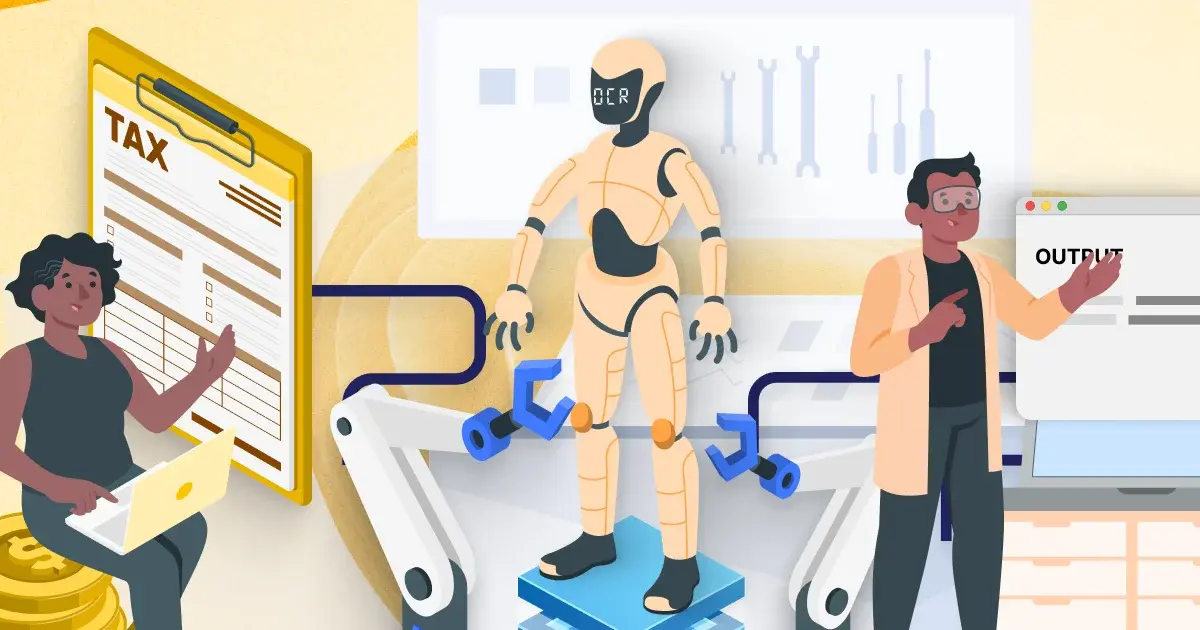
OCR for Financial Services Simplifying Tax Document Processing
In the rapidly changing world of financial services The need to properly manage tax documents effective And safety is paramount. Optical character recognition (OCR) technology has emerged as a transformative tool to simplify tax document processing, save time, reduce errors, and ensure compliance. This article explores how OCR is revolutionizing financial workflows. Especially how to manage tax related documents.
What is OCR technology and how does it work?
OCR, or Optical Character Recognition, is a technology that converts various document types, such as scanned paper, PDFs, or images, into editable and searchable digital formats. Using advanced OCR algorithms, it identifies text within images. and convert it into machine-readable data.
Financial institutions use OCR to process tax forms. Invoice and other important documents This eliminates the need for manual data entry. It helps organizations focus on strategic tasks instead of repetitive administrative tasks.
The role of OCR in tax document management
Manually managing tax documents is often labor intensive and prone to errors. Tax forms such as W-2s, 1099s, and GST invoices contain complex details that require accuracy. OCR technology plays a key role. in:
Deleting important data: The OCR tool records important fields such as tax identification number, income statement, deductions amount, and more with high accuracy.
Automatic data entry: With automatic data entry, OCR greatly reduces human errors and speeds up the overall process.
Compliance Optimization: OCR ensures accurate data processing. This is important for tax compliance and avoiding penalties.
Benefits of using OCR in financial services
Integrating OCR technology into financial workflows provides several benefits that drive efficiency and profitability:
1. Time efficiency
OCR can significantly reduce the time required to process tax documents. Instead of spending hours entering data manually, OCR processes thousands of web pages in minutes. Helps you make decisions faster.
2. Reduce costs
with automatic processing of tax documents Financial institutions thus save on labor costs associated with manual data entry and error correction. These cost savings can be redirected to strategic business initiatives.
3. Improved accuracy
Manual entry of tax information often leads to inaccuracies. OCR helps minimize these errors and reduce the risk of compliance issues by ensuring data reliability.
4. Improved data security
The OCR tool integrates strong security measures to protect sensitive tax information, encryption, access controls and and audit trails ensure financial documents remain secure.
5. Scalability
When the business grows The volume of tax documents has also increased. OCR provides the scalability needed to handle large volumes without compromising speed or accuracy.
Important uses of OCR in financial services
OCR technology is versatile and supports a wide range of applications in the financial sector, such as:
1. Tax Filing and Compliance
OCR automatically extracts data from tax forms. This allows for smooth filing and compliance with tax laws.
2. Audit and Reporting
Financial institutions rely on OCR to extract accurate data for audits and create comprehensive reports without manual intervention.
3. Invoice processing
OCR makes invoice processing easier by removing important details such as invoice number, date and amount to ensure timely payments and record keeping.
4. Customer Onboarding
OCR facilitates efficient customer onboarding by digitizing documents such as ID proofs. Address verification form and financial records.
5. Identifying Fraud
By digitizing and analyzing tax documents, OCR helps identify discrepancies and potential fraud. Helps increase financial security.
Choosing the right OCR solution for financial services
All OCR tools are not created equal. Consider the following features when choosing an OCR solution for financial services.
Accuracy Rate: Choose a tool that provides high accuracy. This is especially true for documents with complex layouts or handwritten text.
Integration capabilities: Opt for an OCR solution that integrates seamlessly with your existing financial software.
Customization options: Look for tools that allow customization to meet your specific tax processing needs.
Data security standards: Ensure that your OCR solution complies with industry regulations such as GDPR and other data protection norms.
Supports multiple formats: The tool should support multiple document types, including PDFs, images, and scanned files.
Future trends in OCR for financial services
As technology evolves, OCR has become more complex. It combines artificial intelligence (AI) and machine learning (ML) to increase efficiency. Key trends to watch are:
AI-powered OCR: Advanced algorithms improve accuracy and recognize complex document layouts.
Real-time processing: Faster processing speeds allow for real-time data extraction and analysis.
Cloud-based solution: Cloud OCR ensures accessibility and scalability. This is especially true for global financial operations.
Natural Language Processing (NLP): NLP integration helps OCR tools understand context, improving data extraction from unstructured documents.
Conclusion
OCR technology is transforming tax document processing in financial services by delivering efficiency, accuracy, and compliance. From automating data entry to improving fraud detection, OCR is an indispensable tool for modern financial institutions. By implementing the right OCR solution, organizations can improve their workflow. Reduce operating costs and stay ahead in a highly competitive market.
As the financial sector continues to embrace digital transformation, OCR’s role will only grow. This paves the way for smarter, faster and more secure tax document management.